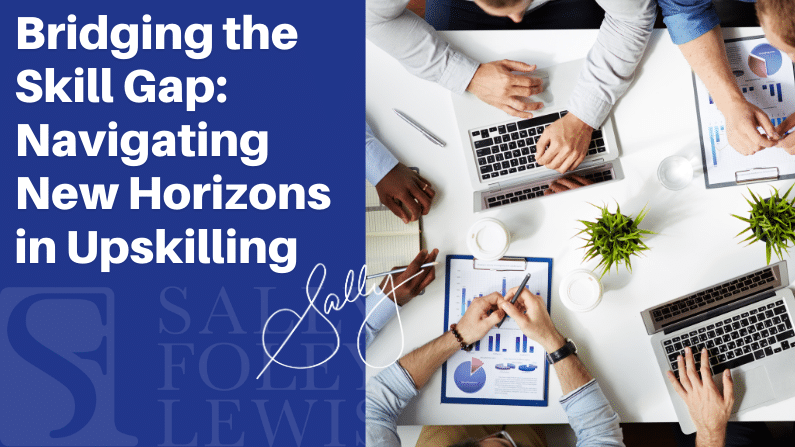I just got back from my almost 2-week-long trip to Dubai, where I delivered multiple workshops for Gulf Coca-Cola Beverages. This organisation is on the edge of exciting times, they have just taken on a new CEO after having a very long tenured CEO. The thoughts and feeling of the leaders in that organisations will be many and varied when considering the upcoming landscape. So it struck me: How can middle managers bridge a potential skills gap in order to navigate new horizons?
In the ever-evolving landscape of business, the challenge of skills gaps has become more pressing than ever before. As industries transform, demands shift, leadership evolves and technology advances at an unprecedented pace, the need for upskilling and skill gap bridging is paramount. So let’s delve into the challenges posed by skills gaps and the remarkable opportunities they bring.
Challenge: Navigating Skill Gaps in a Rapidly Evolving Business Landscape
The rapid pace of technological advancement and changing market demands after COVID have led to a continuous evolution of skill requirements in the workplace. Survey after survey have told us that middle managers are overwhelmed by their responsibilities in today’s hybrid work model, and only 14% of organisations have changed manager role design to reduce their responsibilities.
Identifying skill gaps, designing effective upskilling programs and keeping up with the ever-changing skill landscape are no small feats. Here’s two opportunities behind this gap.
Offering Continuous Learning Opportunities
In the face of the challenge lies an incredible opportunity. Businesses can transform this situation into a strategic advantage by providing continuous learning opportunities for their teams. Embracing a culture of lifelong learning not only bridges skills gaps but also nurtures an environment where employees are empowered to adapt to change and innovate. Online courses, workshops, webinars and collaborative learning platforms can be utilised to offer a wide range of learning options tailored to individual and organisational needs.
By investing in the professional growth of your team, you not only address immediate skills gaps but also cultivate a workforce that is agile, motivated and equipped to tackle any future challenges.
Connecting Team Members to Peer Mentoring
Another effective way to address skills gaps is through peer mentoring. Encouraging experienced team members to share their knowledge and insights with their colleagues creates a powerful support network. Peer mentoring allows for practical learning, real-world insights and the cultivation of a strong sense of community within the workplace.
Through mentorship programs, less experienced team members can benefit from the expertise of their peers, while mentors themselves gain a sense of accomplishment by contributing to the growth of their colleagues. This symbiotic relationship not only bridges skill gaps but also fosters a culture of collaboration and mutual support.
Forcing mentoring programs on workforces are often met with mixed results, allowing for a more organic approach for mentoring to occur will help ensure better matches, and will also allow for the mentoring conversation to start and finish as it requires rather than be forced and inauthentic.
I believe that the challenge of skills gaps presents a unique opportunity for businesses to evolve and thrive in an ever-changing landscape. By offering continuous learning opportunities and fostering peer mentoring, organisations can transform skills gap challenges into catalysts for growth and development.
I hope these opportunities empower you to bridge any skills gaps in your team through upskilling, career development and peer mentoring.




